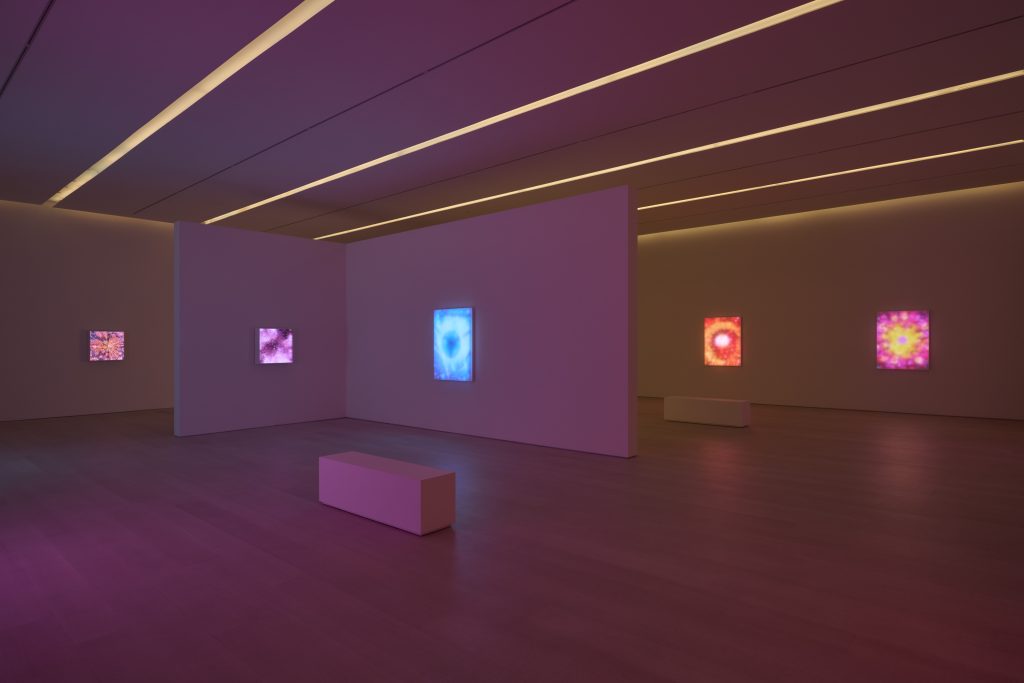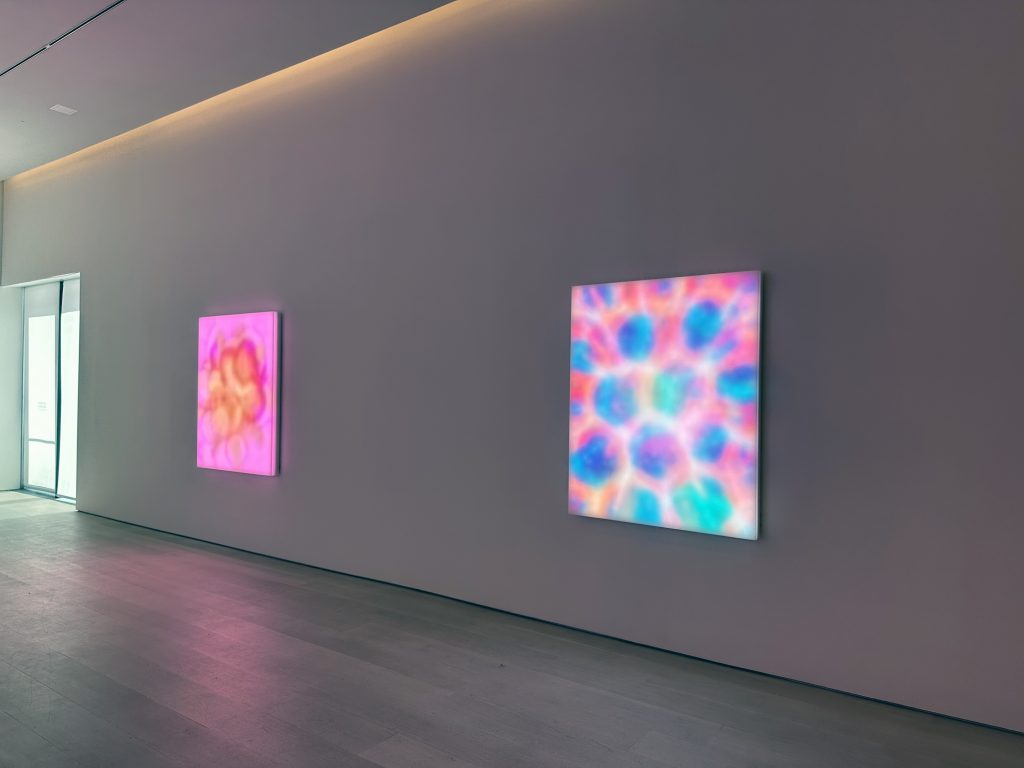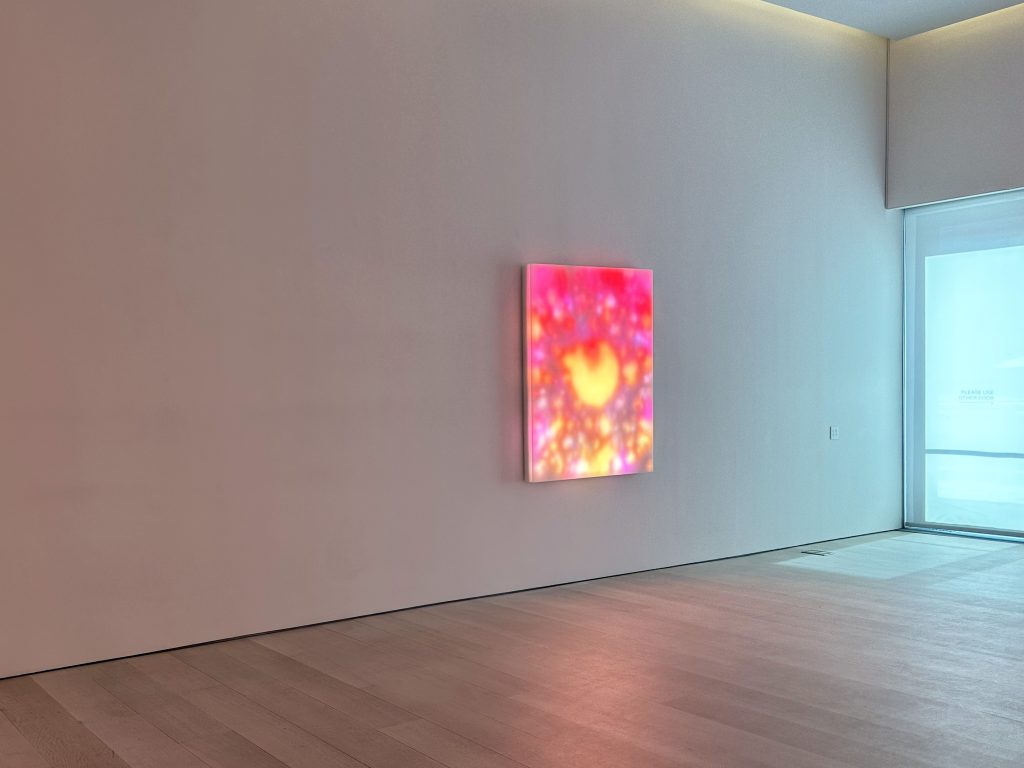Leo Villareal’s “Interstellar” Generates the Visual and Sensorial Beauty of Code
A seductive and serene feeling pervades the artist’s lighting-based artworks on view at NYC’s Pace Gallery

In New York-based artist Leo Villareal‘s new exhibition, Interstellar, the light sculptor captures the cosmos through code as his abstract and ever-moving LED wall installations recall snapshots of the galaxy. Even more impressively, the artworks evoke sensations only felt when standing before something infinite. The show—on view now until 29 April at NYC’s Pace Gallery—continues the artist’s collection of LED displays devised by custom-built software, extending his wall-mounted and celestial-inspired Nebulae series with new works, materials and variations.

The show, the artist tells us, has been about three years in the making and follows Villareal’s Cosmic Reef, his first generative NFT artworks. “The code that I developed for that ended up being incredibly useful in making my other work and kind of worked its way into my process. All of these different things added up—from London to these moments of the pandemic, dealing with nature and then working with this new code—to create the show,” he says. Given the exhibition’s title, it’s no surprise that the latest images from the James Webb Telescope were also top of mind.

“All these things that surround us in nature have always been what’s inspired me. With this body of work, it’s what’s we’re seeing in the cosmos. How can I capture and recreate those sorts of feelings with code? The code that we made to do our generative artworks is 100 kilobytes or something, so how in 100k can you create code that can make thousands of iterations that are each unique with incredible variety?” asks the artist. “In a way it’s getting at this essence of how do these things work. It seems like the cosmos is giant and complicated, but maybe, you can distill these things into these little bits.”

It’s easy to get lost in Villareal’s rhythmic compositions of light. In some moments, clear geometric forms emerge and in others, any clear reference is obfuscated. Scenes that look like they mimic galaxies could just as easily be a microscopic depiction of mold, but this is precisely the point and beauty of Villareal’s work, which often resists narrative and linearity. Within the LED frames, mathematical frameworks conveyed through binary code appear organic; natural references translate themselves to the technological. Everything and nothing exist all at once.

“My process is I engage a lot of chance,” the artist continues. “I’m interested in emergent behavior in artificial life, so setting up certain conditions and then letting something roll, waiting for the moment of surprise when you don’t know what’s going to happen. It’s this improvisational way of using these tools, which people wouldn’t think you could do with code, but you can use it like an instrument and make discoveries.”
Typically Villareal will uses custom software (which he’s been building for around 20 years over the course of his career) to create the visuals. Then, he goes into the code to fine-tune or tweak aspects, finally creating his bespoke frames in his Brooklyn studio. “What LED should it be? How bright should it be? What’s the resolution of it? Those are the decisions we’re making,” he tells us.

For Interstellar, Villareal explored the use of glass in the smaller frames, as opposed to the usual acrylic. The new material lends a sharper resolution (that still allows itself to be amorphous and obscure), as well as depth to the pieces. The impact shifts depending on the angle by which it’s seen or how close and far the view is. Villareal explains, “A lot of what we’re doing with the sequencing is we’re playing with these reflections and distortions and things that glass might do, but it’s getting into this other realm. The object itself is doing all these things, but then the programming is enhancing those aspects of it.” It’s a clever use of lighting, material and code—and the effect is profound.

While images of the artwork are captivating, seeing it in person reveals how truly mesmerizing and meditative it can be. Walking along the gallery, as the ambient lighting softly bounces off the walls, floor and the other artworks, a sense of calm pervades the space. The shape-shifting work prompts viewers to pause, reflect and ask: “What am I looking at?” and “How does that make me feel?” The artist describes this response as “somehow connected to things that we all respond to as humans in nature, like watching a sunset or the movement of water, these very universal things that are not about language, not about imagery. It’s very primal. Then, to be able to play with those things is super powerful.”

It was this connection—to nature, technology, the self and those around—that spurred Villareal’s exploration of code as an art form and not just tools. “I decided to leave behind all the technology, VR stuff,” he says of his research work in Silicon Valley 30 years ago. “I found those worlds to be very lonely and empty. Whereas, when I first went to Burning Man, I was amazed: we are all working together, building a community. I created my first light sculpture [Strobe Matrix] as a beacon to get home at night, not knowing that that would turn into an artwork.”

This experience continues to inform the artist’s work. He explains, “The communal nature of it, we’re here together, we’re experiencing these works, and we don’t have to put anything on; there’s something really nice about that. That’s what completes this exhibition: people coming here and responding, looking at these things. Light is very seductive material, and we are all hard coded to respond to that.”
Villareal’s weaving of LEDs certainly draws people in, but his keen ability to generate what is immense—visually and sensorially—keeps people engaged and, ultimately, inspired.
Hero image by David Graver











